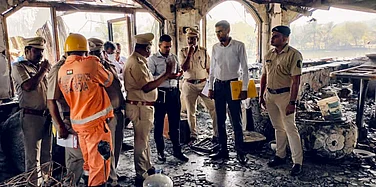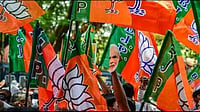A border dispute between the erstwhile Jammu and Kashmir and Himachal Pradesh started a decade ago when people began putting up tea stalls in the Sarchu area, located at an alleviation of over 14,500 ft. The ensuing dispute soon turned Sarchu into one of the highest disputes between the two states, and now between Ladakh Union Territory and Himachal.
Punchok Tashi, an Executive Councilor at the Ladakh Autonomous Hill Development Council (Kargil), says Sarchu lies on the boundary of Himachal Pradesh and Jammu and Kashmir Manali-Leh highway. Sarchu, an important trading stop in the ancient silk route, is a favourite among nomadic tribes and adventurers. It is also a fascinating camping site that witnesses massive crowds between May and September.
The area attracts a large number of tourists, and this promoted residents of Zanskar Tehsil, Kargil, to erect tea shops here. Zanskar residents, Tashi says, always considered Sarchu as part of their area. When Zanskar residents established tea shops here and started receiving a steady income from tourists, they soon got competition from people of Himachal who also came here and set up tea shops.
Soon, reports of minor clashes were reported between Ladakhi and Himachal tea sellers, prompting Jammu and Kashmir Police to swing into action and erect a police post here. Instead, the dispute over Sarchu became bigger. The Himachal Pradesh government sent officials of the crime investigation department (CID) to the area to ascertain the factual position. The Himachal police later claimed that the post was inside the state boundary in Sarchu. Tashi, however, says that Himachal Pradesh maps do have not much authenticity as compared to age-old Ladakh maps about the borders.
Despite objections from Himachal Pradesh, the J&K police continued to have the post. In its letter to the Jammu and Kashmir government, the Himachal government said that British rulers in 1871 had drawn the boundary at Sarchu in the two states. The Himachal Police further shot off a letter to J&K Police asking them to remove the post from the disputed point.
In 2016, a team by the Surveyor General of India visited the disputed border in the presence of high officials from both sides. The Survey of India substantiated Himachal’s claim on the territory. Still, no solution was found as the officials representing the erstwhile J&K government rejected the validity of the maps presented by officials of the Surveyor General of India. “Sarchu is part of Zanskar and the maps with us are proof of it. Time has come for the border to be properly demarcated,” adds Tashi.
After the abrogation of Article 370, Ladakh Union Territory placed pre-Independence revenue records to stake claim over Sarchu. The Ministry of Home Affairs held a meeting early this year to resolve the border dispute between Himachal Pradesh and Ladakh UT. Tashi Gyalson, chief executive of Ladakh Hill Development Council Leh, expressed hope about its early resolution.


























